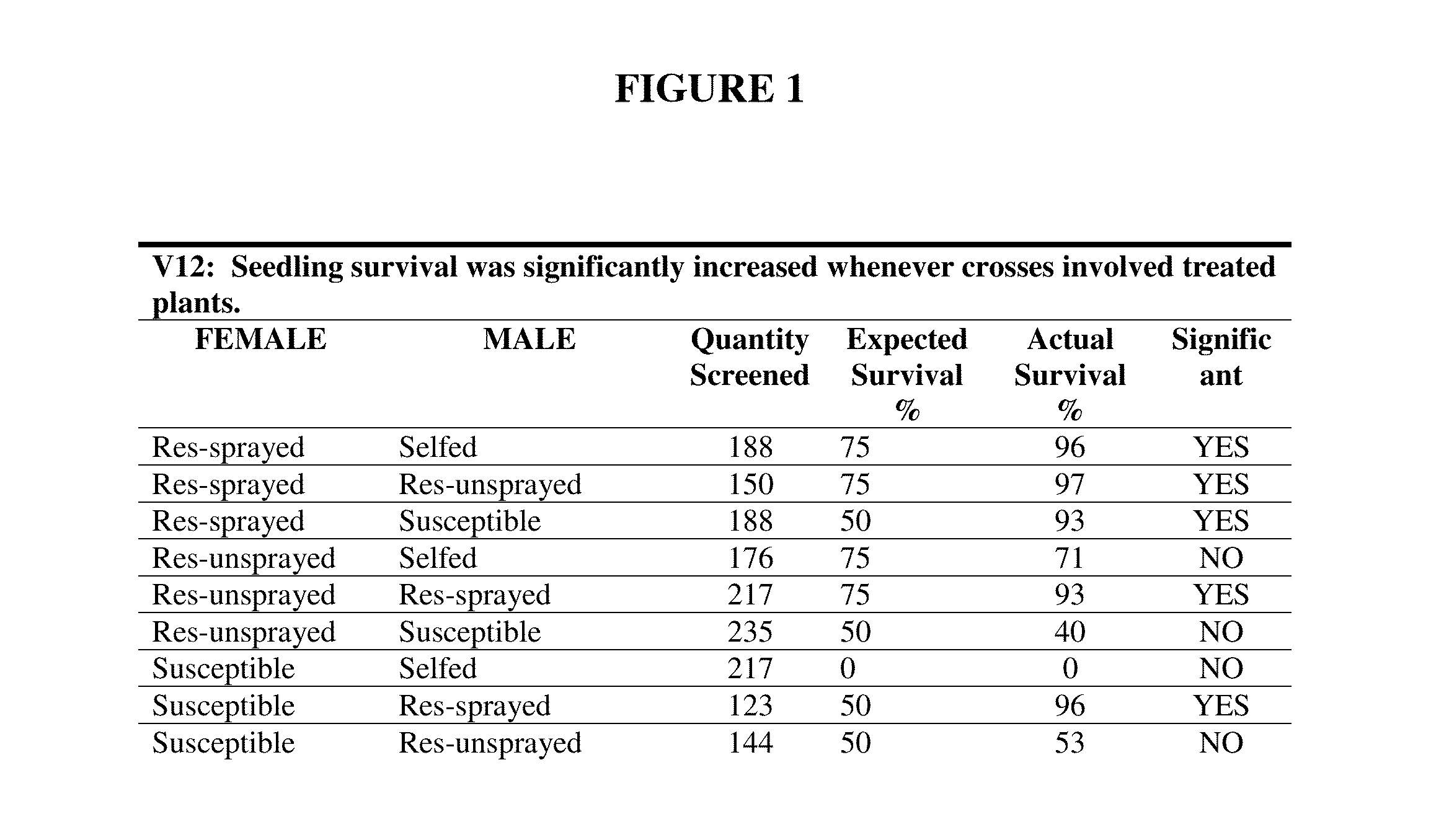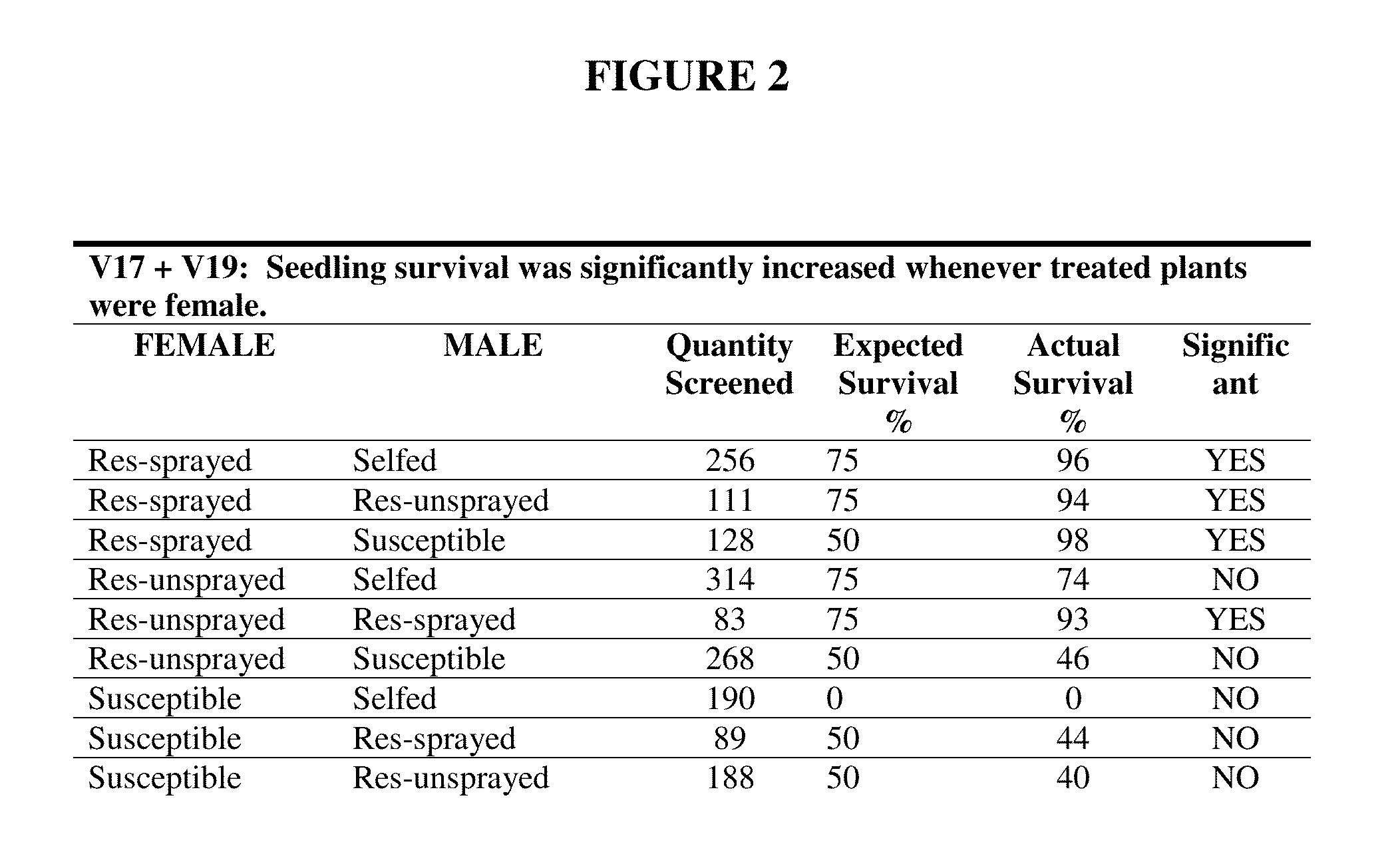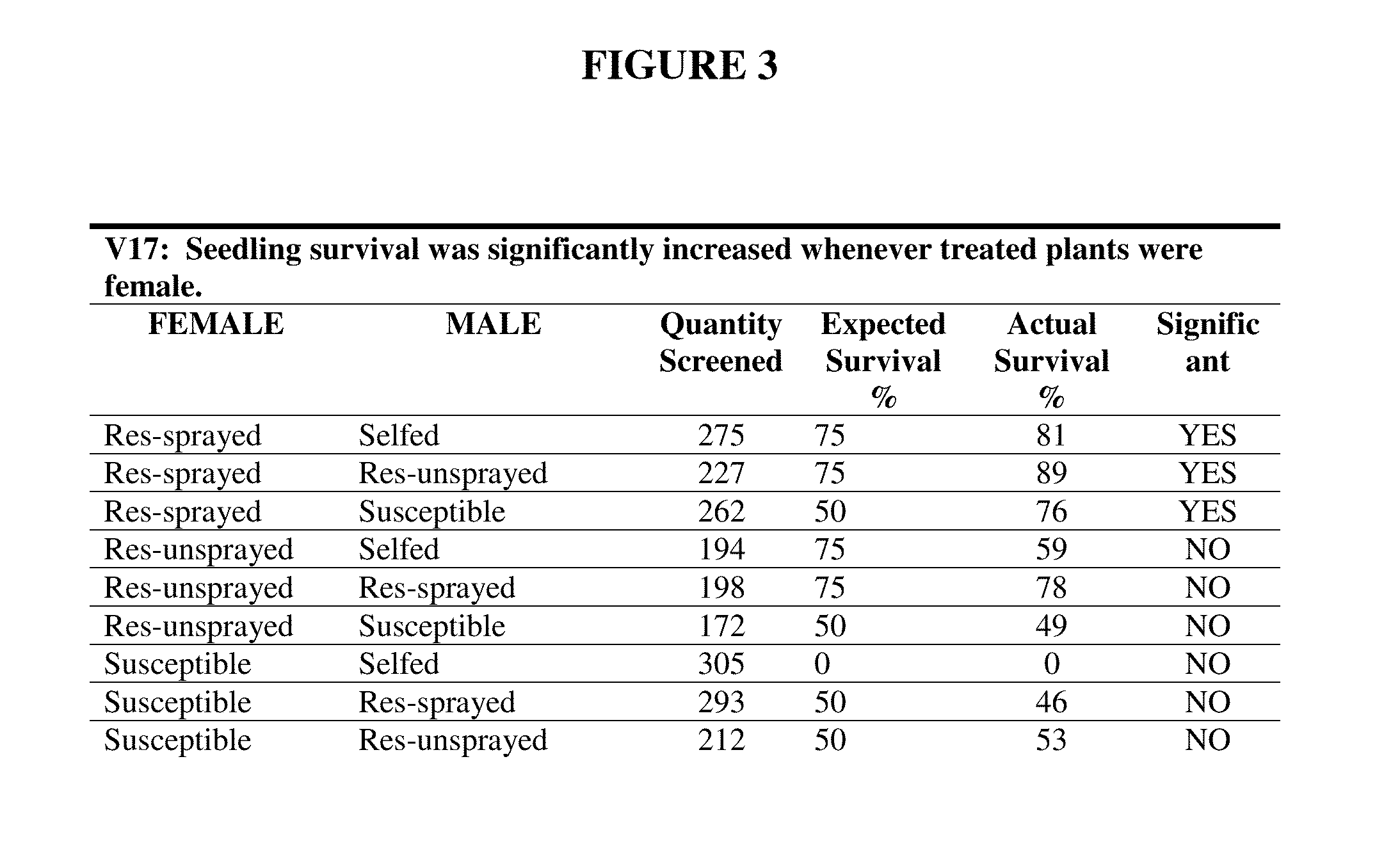Chemical selection of resistant gametes of plants in the field
a technology of resistant gametes and chemical selection, applied in the field of chemical selection of resistant gametes of plants, can solve the problems of substantial homozygy of seeds or progeny, and achieve the effect of increasing the efficiency of a breeding program
- Summary
- Abstract
- Description
- Claims
- Application Information
AI Technical Summary
Benefits of technology
Problems solved by technology
Method used
Image
Examples
example 1
[0055]The elimination of non-transgenic gametes was also tested at the V12-V19 stages. Meiosis sorted the transgene of a diploid hemizygous microsporophyte or macrosporophyte into one-half of the gametes. The resulting transgenic construct contained a gene conferring plant resistance or tolerance to a specific herbicide, namely glyphosate. Application of the herbicide treatments at various growth phases eliminated gametes lacking the transgenic construct.
[0056]Glyphosate treatments included: V12, V17, V19, V15+V17, and V17+V19. Each application, included splits 3 quarts / A. Only resistant plants were sprayed. Glufosinate treatments included: V12, V17, V18, V19, V15+V17, and V17+V19. Each application, included splits 1.5 quarts / A. Only resistant plants were sprayed.
[0057]Pollination of the sprayed resistant plants included: 4 selfed, 4 pollinations from unsprayed resistant, 4 pollinations from susceptible. Pollination of the unsprayed resistant plants included: 4 selfed, 4 pollination...
example 2
[0061]Four row plots of a heterozygous inbred for glyphosate resistance were established. At the V10, V12, V14 and V10+V14 stages of plant development, glyphosate was broadcast to the center two rows. The WeatherMax glyphosate formulation was applied at 0, 1.6 and 3.2 l / Ha, such rates corresponding to 0, 1 and 2 times the normal commercial rates in corn production. To assure there was no glyphosate drift on the non-treated controls, non-treated plants were separated by 16 border rows.
[0062]A series of crosses were made from the treated plants to identify the gamete rouging effects of glyphosate on both pollen and ovules. To characterize the effects on pollen, heterozygous plants treated with glyphosate were crossed onto a wild type inbred. To characterize the effect of glyphosate on ovules, non-treated wild type pollen was crossed to heterozygous plants treated with glyphosate. The various crosses and the expected outcomes are listed in FIG. 6. Finally, the treated heterozygous plan...
example 3
[0063]The progeny of the various crosses from Example 2 were evaluated by two methods. In the first method, 25 seeds per replication (4 replications in total) were planted into rag dolls and grown at 25° C. in darkness four days. After this time, the rag dolls were transferred to a greenhouse to allow the shoots to turn green. After four days in the greenhouse, seedlings for each rag doll were dipped in a 2% v / v solution of RoundUp Ultra (concentration corresponding to common concentrations in spray applications at the field level). After one week, individual plants were rated as normal, dead or abnormal. Normal plants were assumed to carry the gene for tolerance to glyphosate, dead plants were assumed to be wild type.
[0064]In the second method of analysis, the glyphosate resistant selfed plants were grown in the field and leaf punched at the V8 stage of development. Leaf tissues were then frozen and scored for their level of zygosity according to standard PCR protocols for glyphosa...
PUM
| Property | Measurement | Unit |
|---|---|---|
| v/v | aaaaa | aaaaa |
| trait purity | aaaaa | aaaaa |
| resistance | aaaaa | aaaaa |
Abstract
Description
Claims
Application Information
 Login to View More
Login to View More - R&D Engineer
- R&D Manager
- IP Professional
- Industry Leading Data Capabilities
- Powerful AI technology
- Patent DNA Extraction
Browse by: Latest US Patents, China's latest patents, Technical Efficacy Thesaurus, Application Domain, Technology Topic, Popular Technical Reports.
© 2024 PatSnap. All rights reserved.Legal|Privacy policy|Modern Slavery Act Transparency Statement|Sitemap|About US| Contact US: help@patsnap.com










